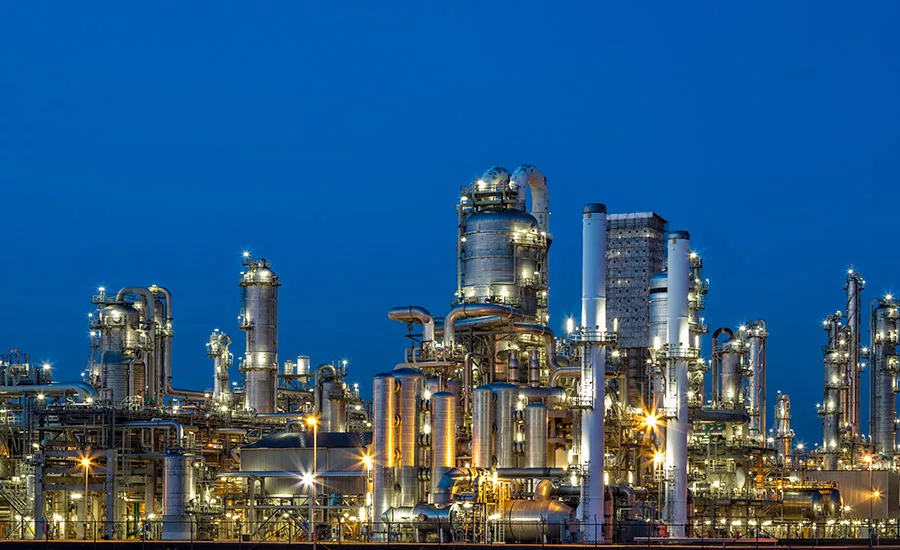Chemical Industry Innovates Amid Logistics, Labor, and Raw Materials Challenges
How are leaders in the chemical industry addressing the issues challenging the supply chain and raw materials landscape?

Image courtesy of Bim / E+ via Getty Images
Suppliers of raw materials to the adhesives and sealants industry have faced a myriad of challenges over the last four years. Among those challenges are supply chain and logics constraints, geopolitical and climate events that have limited the supply of basic feedstocks from certain regions of the world, and a shifting labor market. ASI reached out to leaders in this sector to see how they are coping with these challenges. Jennifer Abril, President & CEO, SOCMA, and representatives from Covestro were kind enough to provide some enlightening answers to the questions facing this industry.
ASI: How would you characterize the 2022-2023 raw materials and chemicals landscape?
 Jennifer Abril: As global economies and consumer appetites slowed in the back-half of 2022, demand in the specialty and contract chemical sector began to ease correspondingly. This softened state has carried over into early 2023 as customers seek to draw down their inventories.
Jennifer Abril: As global economies and consumer appetites slowed in the back-half of 2022, demand in the specialty and contract chemical sector began to ease correspondingly. This softened state has carried over into early 2023 as customers seek to draw down their inventories.Nonetheless, SOCMA’s long-term outlook remains strong for North American manufacturers. The volatility customers experienced during the pandemic fundamentally shifted supply chains and procurement strategies in an effort to reduce vulnerabilities. Although price remains a key driver, there is also a renewed value on certainty of supply and quality of product delivery which, in turn, has placed domestic manufacturing on solid footing for the foreseeable future.
Covestro: Especially in Europe, it is dominated by elevated energy and feedstock prices and a decline in demand in several industries. Efforts to reduce CO2 footprints of the industry are increasing.
ASI: What impact is the current political environment, both in the United States and globally, having on raw materials and chemicals?
Abril: There is no question geopolitical drivers are affecting the chemicals industry. Manufacturing in general and raw materials procurement are specifically sensitive to geopolitical uncertainties. From access to energy, pandemic restrictions to economic uncertainty, manufacturers across the chemical value chain remain agile and responsive to unpredictability.
From a sourcing point of view, availability of certain raw materials has been critically impacted due to long-term lockdowns in China and the ongoing war in Ukraine. In many instances, alternatives for these materials are limited at best and non-existent at worst, placing procurement managers in an increasingly difficult position. On the economic front, high energy prices and global inflation are exerting pressure on margins and altering production strategies. Where possible, companies have responded by shifting production to geographies that are more stable and predictable, like the United States.
Domestic viewpoints towards the manufacturing sector have trended more positive in recent years. A heightened desire to re-shore critical materials was undoubtedly brought on by the COVID pandemic, when both policymakers and the public learned how intertwined and interdependent global supply chains had become for essential sectors like pharmaceuticals, agricultural products, and consumer goods. The U.S. Congress and the Biden Administration responded, in turn, by embracing the manufacturing sector and advancing legislative initiatives to promote domestic production and supply. Yet the U.S. regulatory environment must also be refined if these ambitions are to become realities. In too many instances, regulatory red tape causes unnecessary obstacles to the self-sufficiency envisioned by political leaders.
Covestro: New regulations and the new Infrastructure Investment and Jobs act are changing current standards, focusing more on sustainable and local solutions. Stricter migration limits for specific substances lead to a shift to other raw materials and chemicals (e.g. food contact regulations or workplace hygiene measures).
ASI: How are recyclability and circular economy concepts being addressed in the raw materials and chemicals industries?
Abril: Like many other industries, the chemicals sector has committed to ambitious goals related to ESG and the circular economy. For specialty chemicals producers, this shows up most tangibly in our responsible use of inputs and facility resources. In this high-demand environment, specialty and batch chemical manufacturers continue to make engineering and processing innovations, resulting in environmental advancements such as reduced emissions and decreased water usage.
Consumers are looking for alternatives to traditional materials in manufactured goods and industry customers are looking for project partners with sustainable solutions. We are seeing an uptick in opportunities for specialty chemical manufacturers with bio-based ingredients and low-impact chemistry. SOCMA’s Lead Sheet service is receiving more and more requests for project partners in the recycling space. Learn more about SOCMA’s specialized B2B matchmaking services at www.socma.org/commercial/.
Additionally, the specialty sector has committed a strong focus toward recycling and repurposing of materials. SOCMA member companies are rethinking how they capture waste material; they are mining waste for value by acutely monitoring their waste profiles and assessing by-products that can be reclaimed and reused. This simply makes sense both from a financial and sustainability standpoint.
Covestro: There are different approaches. When it comes to adhesives, their influence on recycling is investigated. Adhesives themselves are typically not the target of the recycling, but the substrates they are joining together. There are specific certificates and design guidelines in place (e.g. RecyClass) that help to identify the right use of adhesives for a better recycling.
When it comes to circular economy, main adhesive industry players refer to the definition of the Ellen MacArthur Foundation What is a circular economy? | Ellen MacArthur Foundation.
As there are various cycles, there are different ways to make adhesives circular. One is the carbon cycle, when using bio-based or recycled feedstocks, for instance.
Looking for a reprint of this article?
From high-res PDFs to custom plaques, order your copy today!






